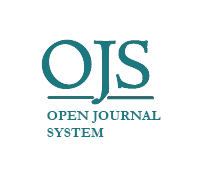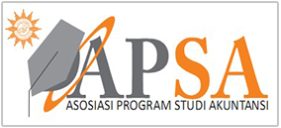Detection Of F-Score Model On Fraudulent Financial Reporting With Fraud Pentagon Theory
DOI:
https://doi.org/10.22219/jrak.v12i1.20605Keywords:
Fraudulent Financial Reporting, Fraud Pentagon Theory, F-Score ModelAbstract
The purpose of this study is to investigate the impact of fraud Pentagon theory on the detection of fraudulent financial reporting in the banking sector from 2015-2019. Independent variable is proxies from fraud pentagon theory which are financial target, financial stability, external pressure, ineffective of monitoring, changes in auditor, changes in directors, and frequent number of CEO’s pictures while dependent variable is fraudulent financial reporting. The population of this study is the entire banking sector listed on the Indonesia Stock Exchange since 2015-2019. Total sample used is 180 samples. The statistical technique used in this research is panel data with multiple regression analysis method with PLS (Partial Least Square) Smart PLS 3.0 software. The result this study shows financial stability and ineffective monitoring meeting have an effect in detecting indication of financial reporting. The results of this study can be used by users of financial statements as a reference in detecting indications of fraudulent financial reporting. The contribution of this research to stakeholders, including management and policy maker in terms of fraud detection as one of the pillars of an anti-fraud strategy using ratios from financial statements.
Downloads
References
ACFE. (2019). Survey fraud Indonesia 2019.
ACFE. (2020). Report to the Nation. 2020 Global study on occupational fraud and abuse. Asia-Pacific edition. (Issue August). Association of Certified Fraud Examiners, Inc.
Bawekes, H. F., Simanjuntak, A. M., & Christina Daat, S. (2018). Pengujian teori fraud pentagon terhadap fraudulent financial reporting (Studi empiris pada perusahaan yang terdaftar di Bursa Efek Indonesia tahun 2011-2015). Jurnal Akuntansi & Keuangan Daerah, 13(1), 114–134.
Bayagub, A., Zulfa, K., & Mustoffa, A. F. (2018). Analisis elemen-elemen fraud pentagon sebagai determinan fraudulent financial reporting (Studi pada perusahaan property dan real estate yang terdaftar di Bursa Efek Indonesia periode 2014-2016). Isoquant, 2(2), 1–11. https://doi.org/10.24269/iso.v2i2.184
Beneish, M. D. (1999). The Detection of Earnings Manipulation. Financial Analysts Journal, 55(5), 24–36. https://doi.org/10.2469/faj.v55.n5.2296
Christian, N., & Visakha, B. (2021). Analisis teori fraud pentagon dalam mendeteksi fraud pada laporan keuangan perusahaan yang terdaftar di Bursa Efek Indonesia. Conference on Management, Business, Innovation, Education and Social Science, 1(1), 1325–1342.
Cressey, D. R. (1950). The criminal violation of financial trust. American Sosiological Review, 15(6), 738–743. https://doi.org/10.1190/segam2013-0137.1
Dechow, P., Larson, C., & Sloan, R. (2011). Predicting material accounting misstatements. Contemporary Accounting Reseacr, 28, 17–82. https://doi.org/10.1111/j.1911-3846.2010.01041.x
Fitri, F. A., Syukur, M., & Justisa, G. (2019). Do the fraud triangle components motivate fraud in Indonesia? Australasian Accounting, Business and Finance Journal, 13(4), 63–72. https://doi.org/10.14453/aabfj.v13i4.5
Ghozali, I. (2016). Aplikasi analisis multivariate dengan program SPSS. Badan Penerbit Diponegoro.
Ghozali, Imam, & Latan, H. (2015). Konsep, Teknik, Aplikasi Menggunakan. Smart PLS 3.0 Untuk Penelitian Empiris. (1st ed.). Badan Penerbit Undip.
Handoko, B. L., Hendra, E., & Anandita, B. (2019). Factors affecting fraudulent statement in forensic accounting perspective. International Journal of Innovative Technology and Exploring Engineering, 9(1, November), 28–32. https://doi.org/10.35940/ijitee.A3889.119119
Handoko, B. L., & Natasya. (2019). Fraud diamond model for fraudulent financial statement detection. International Journal of Recent Technology and Engineering, 8(3, September), 6865–6872. https://doi.org/10.35940/ijrte.C5838.098319
Hasnan, S., Rahman, R. A., & Mahenthiran, S. (2013). Management motive, weak governance, earnings management, and fraudulent financial reporting: Malaysian evidence. Journal of International Accounting Research, 12(1), 1–27. https://doi.org/10.2308/jiar-50353
Hugo, J. (2019). Efektivitas Model Beneish M-Score Dan Model F-Score dalam mendeteksi kecurangan laporan keuangan. Jurnal Muara Ilmu Ekonomi Dan Bisnis, 3(1), 165. https://doi.org/10.24912/jmieb.v3i1.2296
Indarto, S. L., & Ghozali, I. (2016). Fraud diamond: Detection analysis on the fraudulent financial reporting. Risk Governance and Control: Financial Markets and Institutions, 6(4 Fall-Continued-1), 116–123. https://doi.org/10.22495/rcgv6i4c1art1
Koharudin, A., & Januarti, I. (2021). Lack of financial reporting using Crowe’s fraud pentagon theory. Jurnal Dinamika Akuntansi, 13(2), 148–157.
Novita, N. (2019). Teori fraud pentagon dan deteksi kecurangan pelporan keuangan. Jurnal Akuntansi Kontemporer, 11(2 (Juli)), 64–73. https://doi.org/10.33508/jako.v11i2.2077
Penerapan Srategi Anti Fraud bagi Bank Umum, Pub. L. No. POJK no 39/POJK.03/2019, Otoritas Jasa Keuangan (2019).
Pamungkas, I. D., Ghozali, I., Achmad, T., Khaddafi, M., & Hidayah, R. (2018). Corporate governance mechanisms in preventing accounting fraud: A Study of fraud pentagon model. Journal of Applied Economic Sciences, XIII(2 (56), Spring), 549–560.
Puspitha, M. Y., & Yasa, G. W. (2018). Fraud pentagon analysis in detecting fraudulent financial reporting (Study on Indonesian Capital Market). International Journal of Sciences: Basic and Applied Research (IJSBAR), 42(5), 93–109. http://gssrr.org/index.php?journal=JournalOfBasicAndApplied
Rachman, F. F. (2018). Bank Bukopin permak laporan keuangan, ini kata BI dan OJK. Detic.Com, Detic finance.
Rusmana, O., & Tanjung, H. (2019). Identifikasi kecurangan laporan keuangan dengan fraud pentagon studi empiris BUMN terdaftar di Bursa Efek Indonesia. Jurnal Ekonomi, Bisnis Dan Akuntansi (JEBA), 21(04), 121–135.
Sari, T. P., & Lestari, D. I. T. (2020). Analisis faktor risiko yang mempengaruhi financial statement fraud : Prespektif diamond fraud theory. Jurnal Akuntansi Dan Pajak, 20(2), 109–125. https://doi.org/10.29040/jap.v20i2.618
Singleton, T. W., & Singleton, A. J. (2010). Fraud auditing and forensic accounting (Fourth Edi). John Wilet & Sons,Inc.
Skousen, C. J., Smith, K. R., & Wright, C. J. (2009). Detecting and predicting financial statement fraud: The effectiveness of the fraud triangle and SAS No. 99. In Corporate Governance and Firm Performance Advances in Financial Economics (Issue 13). http://dx.doi.org/10.1108/S1569-3732(2009)0000013005
Tessa, C., & Harto, P. (2016). Pengujian teori fraud pentagon pada sektor keuangan dan perbankan di Indonesia. Simposium Nasional Akuntansi XIX, Lampung, 1–21. file:///C:/Users/ASUS/Downloads/Pengujian Teori Fraud Pentagon Pada Sektor Keuangan dan Perbankan di Indonesia.pdf
Tunjungsari, P., Astuti, D. S. P., & Kristanto, J. (2018). Pengaruh fraud diamond dalam mendeteksi financial statement fraud. Jurnal Akuntansi Dan Sistem Teknologi Informasi, 14(1 (Maret)), 11–20.
Ulfah, M., Nuraina, E., & Wijaya, A. L. (2017). Pengaruh fraud pentagon dalam mendeteksi fraudulent financial reporting (Studi empiris pada Perbankan di Indonesia yang terdaftar di BEI. Forum Ilmiah Pendidikan Akuntansi, 5(1 (Oktober)), 399–418. Fraud, Fraud Pentagon, Fraudulent Financial Reporting
Wicaksana, E. A., & Suryandari, D. (2019). Pendeteksian kecurangan laporan keuangan pada perusahaan pertambangan di Bursa Efek Indonesia. Jurnal Riset Akuntansi Keuangan, 4(1), 44–59.
Wolfe, D. T., & Hermanson, D. R. (2004). ‘The fraud diamond : Considering the four elements of fraud. The CPA Journal, 74(12), 38–42. https://digitalcommons.kennesaw.edu/facpubs/1537/
Downloads
Published
Issue
Section
License
Copyright (c) 2022 Oka Septa Tinambunan, Indira Januarti

This work is licensed under a Creative Commons Attribution 4.0 International License.

Jurnal Reviu Akuntansi dan Keuangan is licensed under a Creative Commons Attribution-NonCommercial-ShareAlike 4.0 International License.
Authors who publish with this journal agree to the following terms:
- Authors retain copyright and grant the journal right of first publication with the work simultaneously licensed under a Creative Commons Attribution-NonCommercial-ShareAlike 4.0 International License that allows others to share the work with an acknowledgement of the work's authorship and initial publication in this journal.
- Authors are able to enter into separate, additional contractual arrangements for the non-exclusive distribution of the journal's published version of the work (e.g., post it to an institutional repository or publish it in a book), with an acknowledgement of its initial publication in this journal.
- Authors are permitted and encouraged to post their work online (e.g., in institutional repositories or on their website) prior to and during the submission process, as it can lead to productive exchanges, as well as earlier and greater citation of published work (See The Effect of Open Access).










